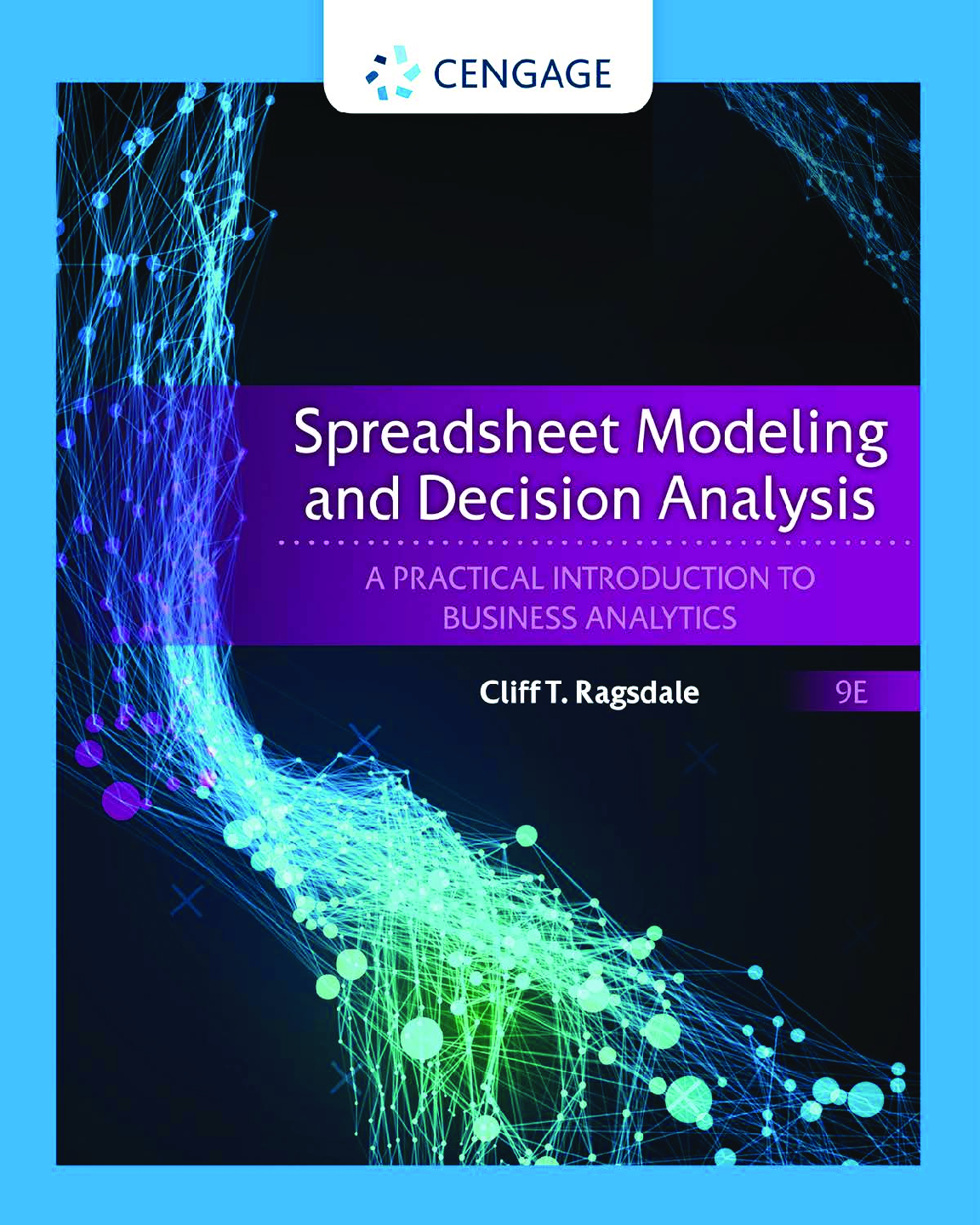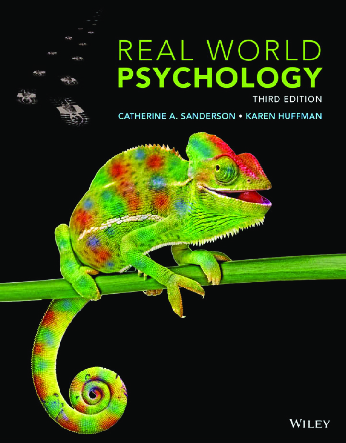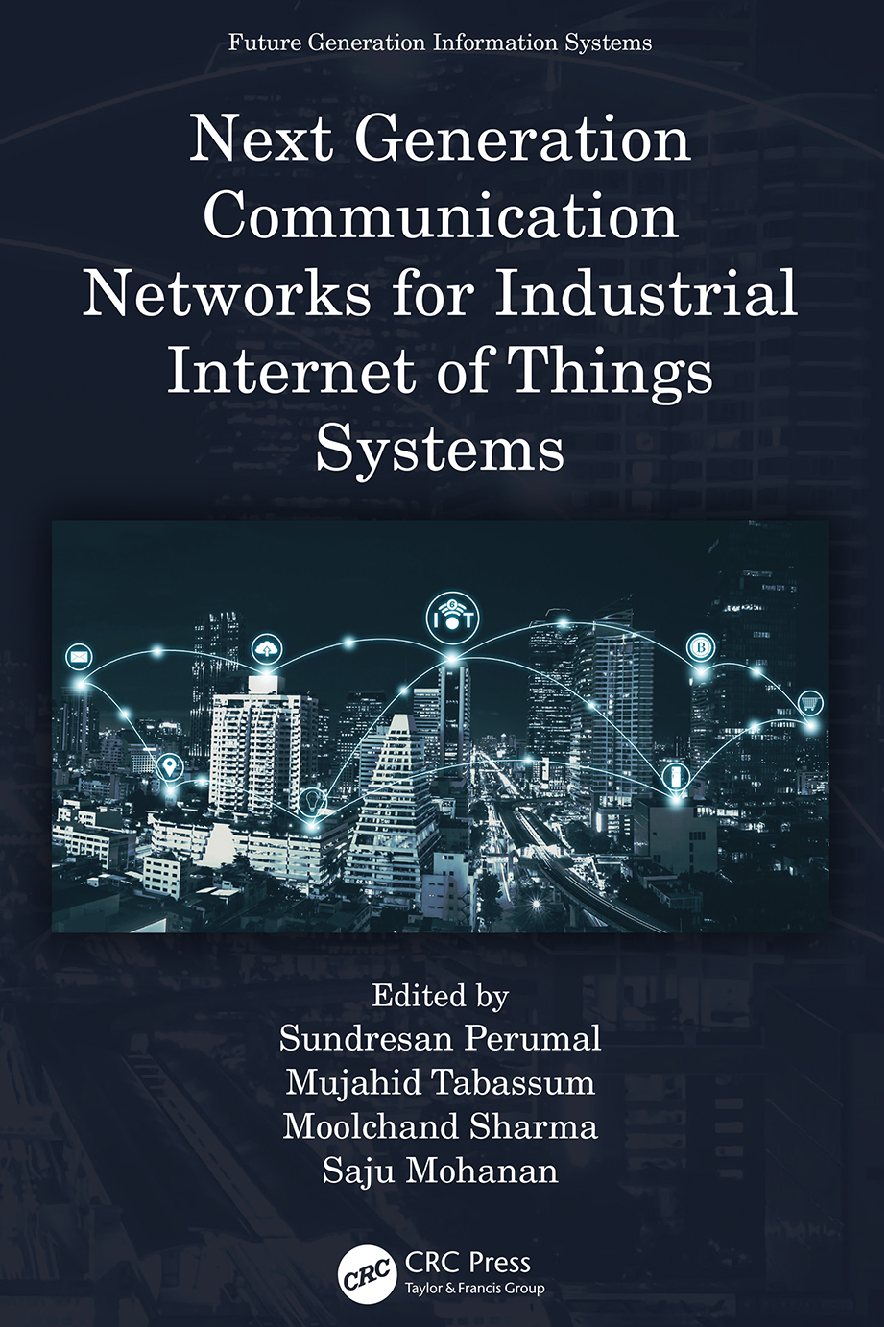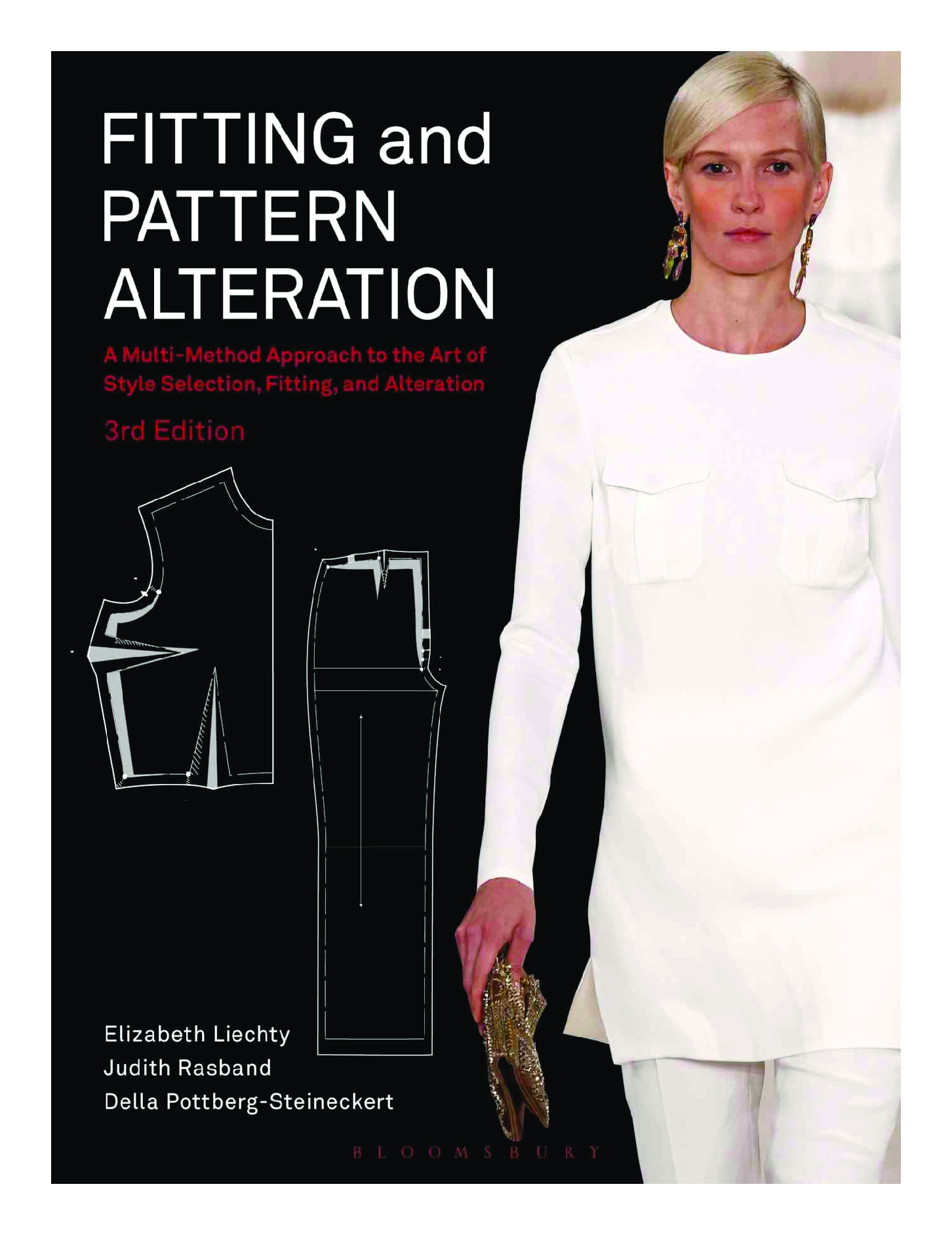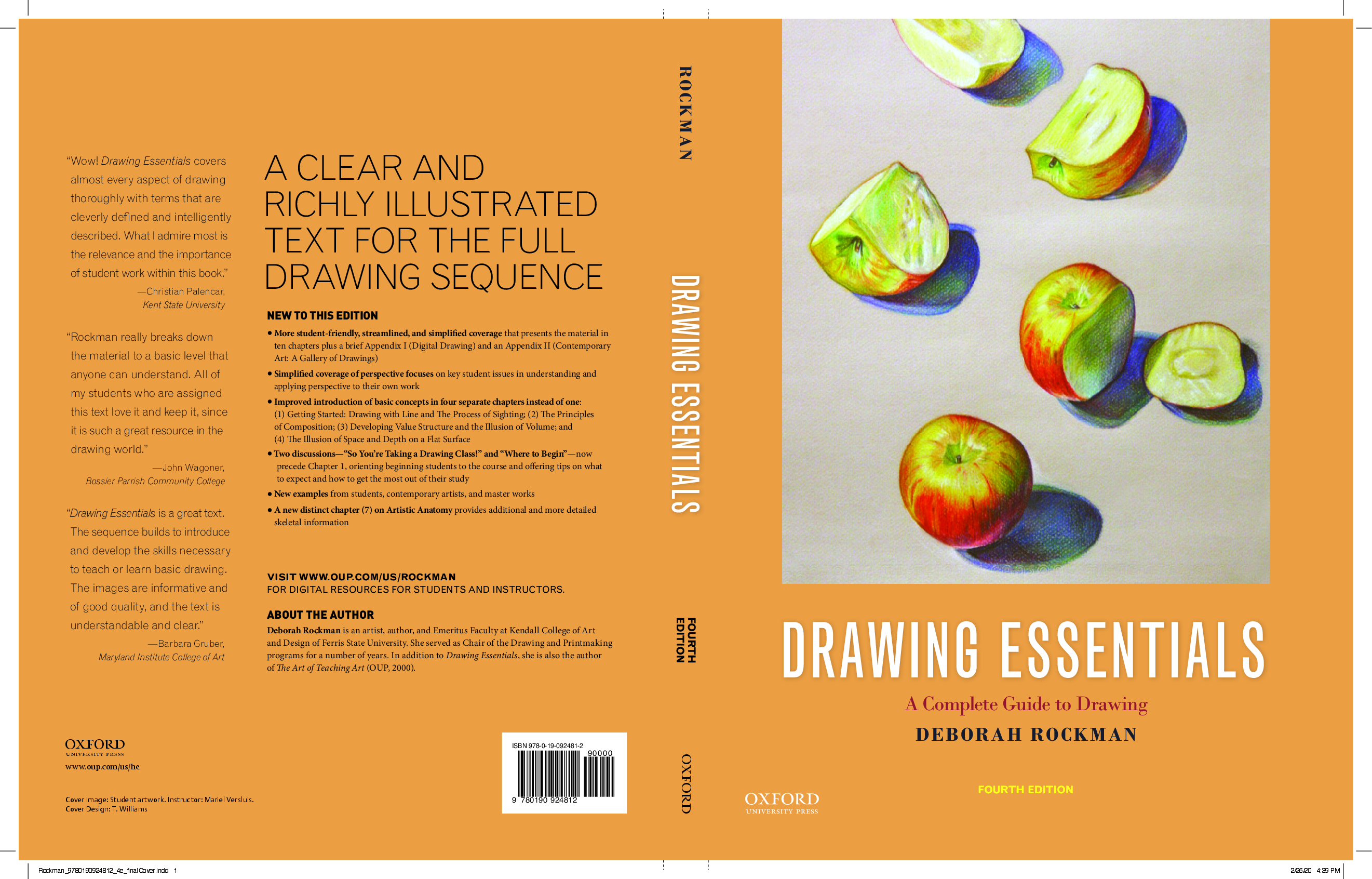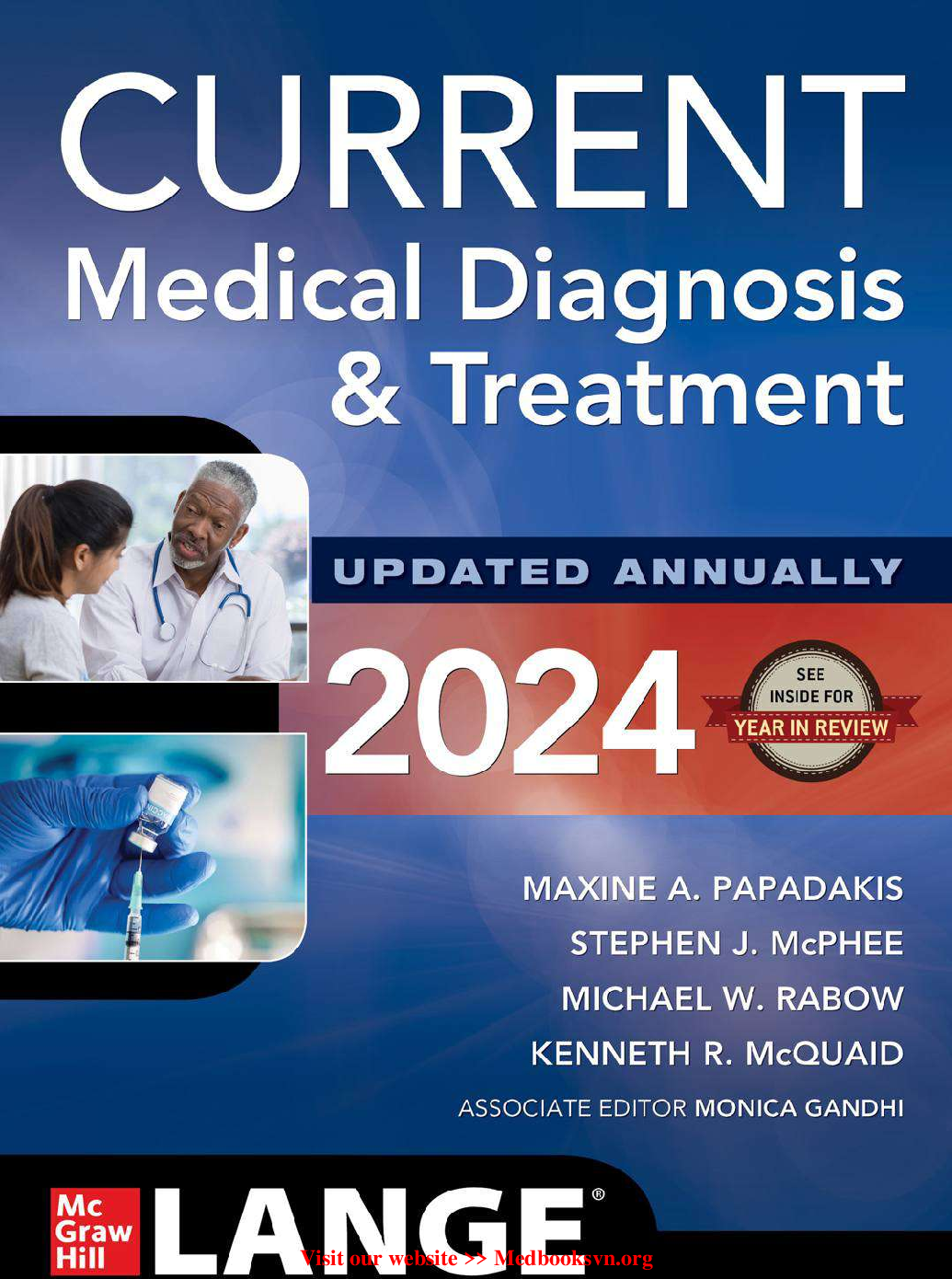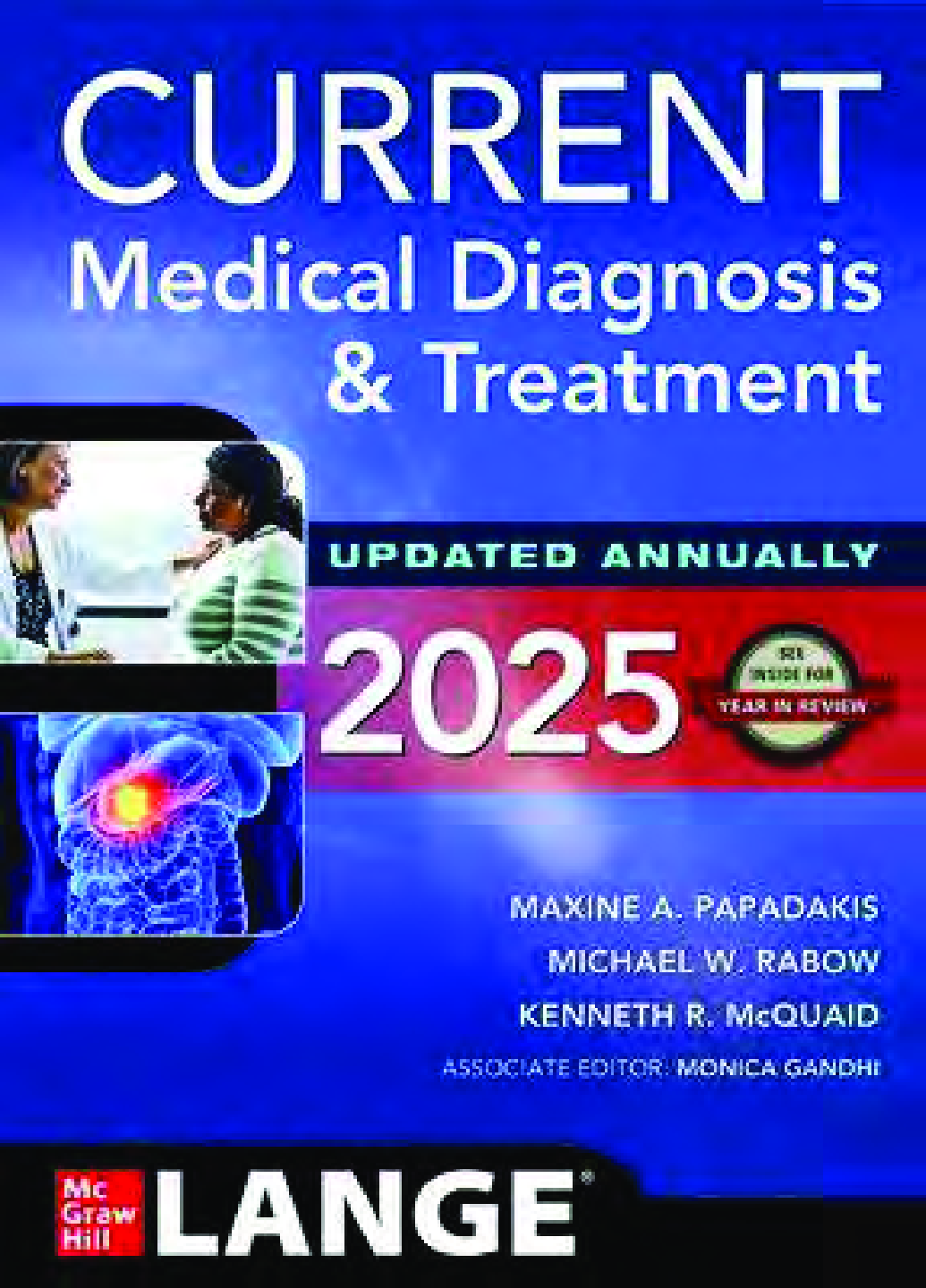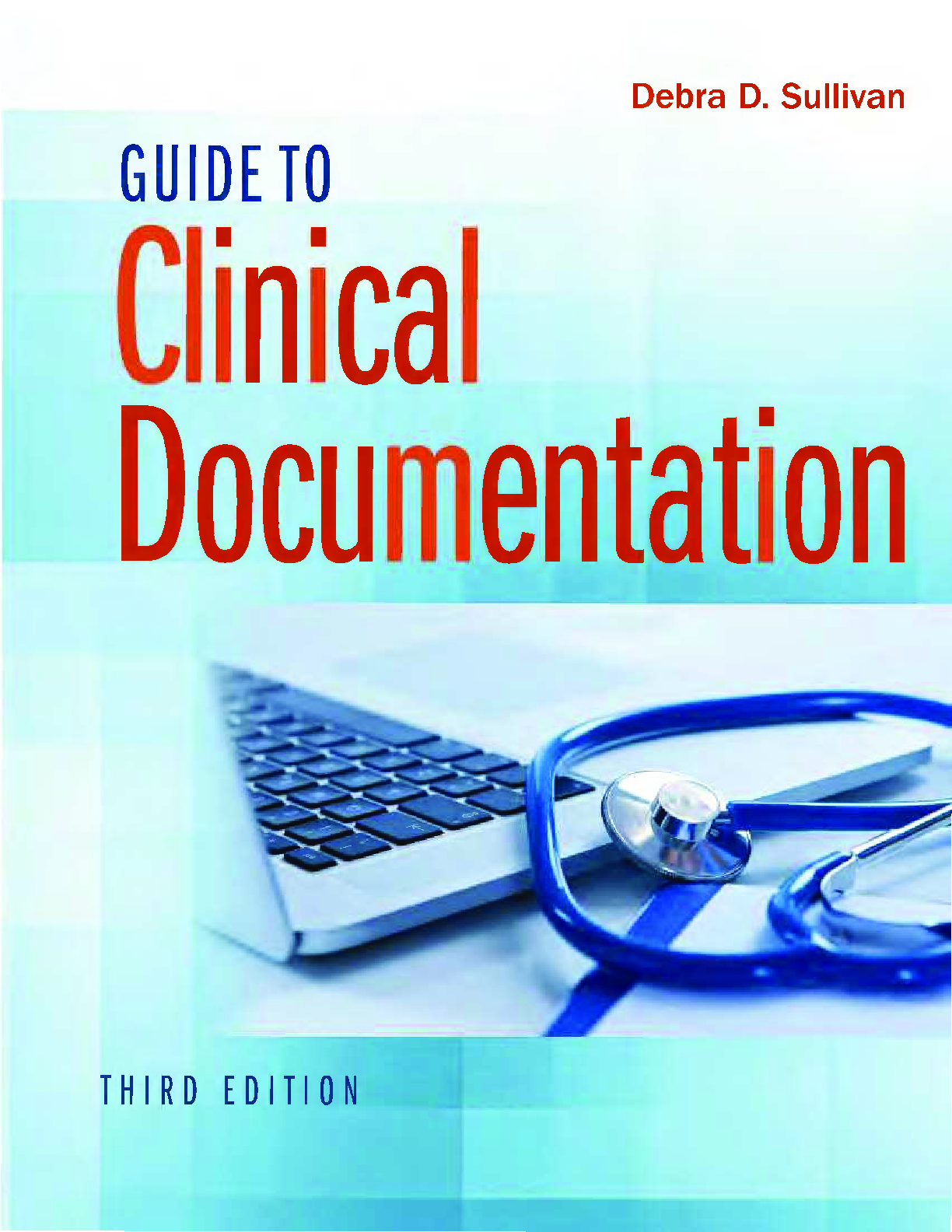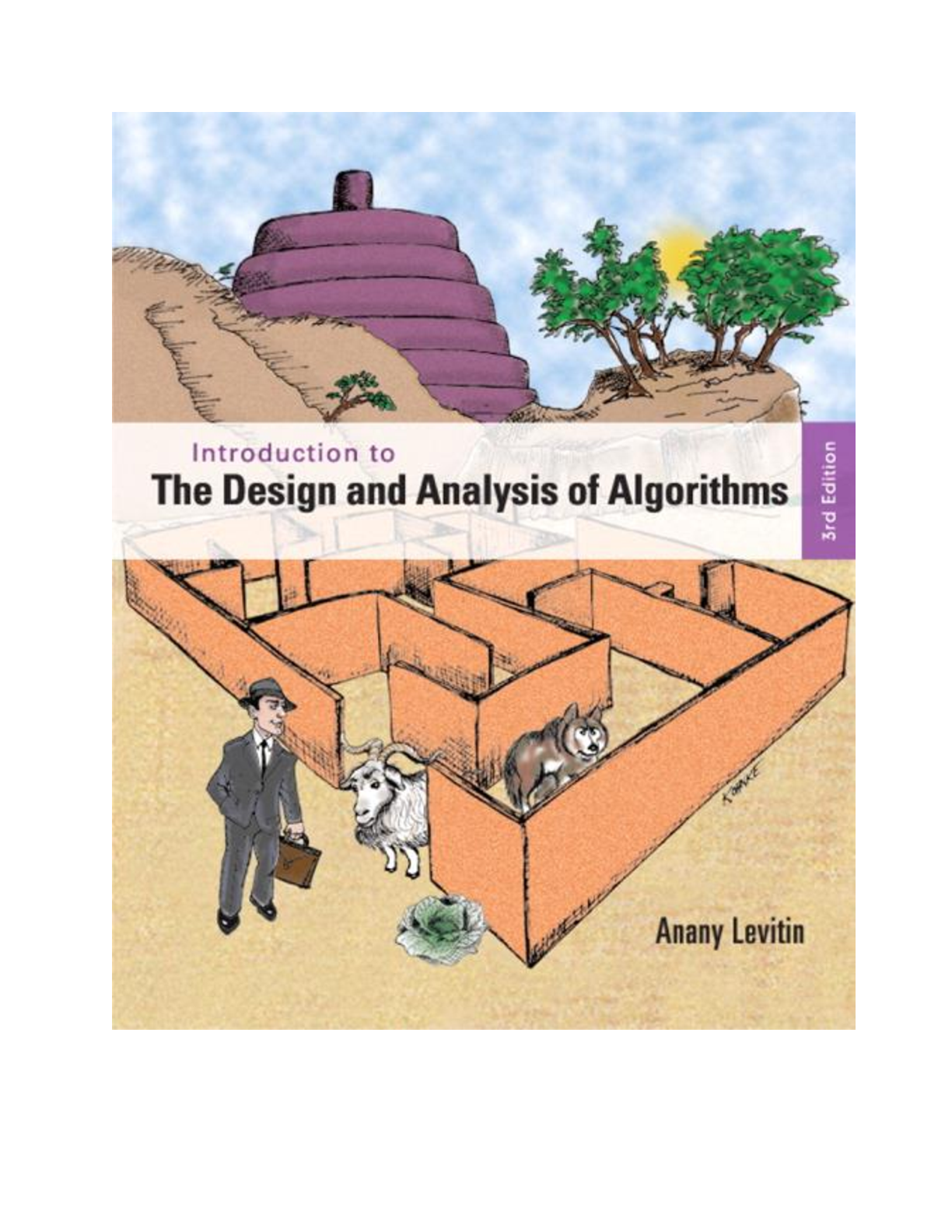Social Sciences > eBook-PDF > [eBook] [PDF] Principles of Life 3rd Edition By David Hillis, Mary Price, Richard Hill, David Hall, (All)
[eBook] [PDF] Principles of Life 3rd Edition By David Hillis, Mary Price, Richard Hill, David Hall, Marta Laskowski
Document Content and Description Below
About this Book Cover Page Halftitle Page Title Page Copyright Page Dedication About the Authors Principles of Life, Third Edition Principles of Life—Tour of the New Edition Principles of L... ife, Third Edition Content Updates Core Competencies Mastering the Key Concepts Developing Skills and Working with Data Active Learning LaunchPad LearningCurve Assessment Preface Advisors and Reviewers Media and Supplements Table of Contents Chapter 1 Principles of Life 1.1 Living Organisms Share Common Aspects of Structure, Function, and Energy Flow Life as we know it had a single origin Major steps in the history of life are compatible with known physical and chemical processes Biologists can trace the evolutionary tree of life Life’s unity allows discoveries in biology to be generalized 1.2 Life Depends on Organization and Energy Organization is apparent in a hierarchy of levels, from molecules to ecosystems Each level of biological organization consists of systems Biological systems are highly dynamic even as they maintain their essential organization Positive and negative feedback are common in biological systems Systems analysis is a conceptual tool for understanding all levels of organization 1.3 Genetic Systems Control the Flow, Exchange, Storage, and Use of Information Genomes encode the proteins that govern an organism’s structure Genomes provide insights into all aspects of an organism’s biology 1.4 Evolution Explains the Diversity as Well as the Unity of Life Natural selection is an important process of evolution Evolution is a fact, as well as the basis for broader theory 1.5 Science Is Based on Quantitative Observations, Experiments, and Reasoning Observing and quantifying are important skills Scientific methods combine observation, experimentation, and logic Getting from questions to answers Well-designed experiments have the potential to falsify hypotheses Statistical methods are essential scientific tools Not all forms of inquiry into nature are scientific Part 1 Cells Chapter 2 Life’s Chemistry and the Importance of Water 2.1 An Element’s Atomic Structure Determines Its Properties Atoms are composed of protons, neutrons, and electrons Isotopes differ in the number of neutrons in the nucleus Electrons occur in atomic orbitals in electron shells Electrons in the outermost shell determine an element’s chemical properties Some elements and isotopes are unstable 2.2 Atoms Bond to Form Molecules Atoms share electrons in covalent bonds Ionic bonds form between atoms by a transfer of electrons Polar molecules can interact through electrostatic attractions Molecules can weakly attract one another through van der Waals interactions 2.3 Chemical Transformations Involve Energy and Energy Transfers Change in living systems involves energy transformations The first law of thermodynamics states that energy cannot be created or destroyed The second law of thermodynamics states that with each energy transformation, entropy increases 2.4 Chemical Reactions Transform Substances Chemical reactions release or require energy Not all chemical reactions begin spontaneously Several factors affect the rate of a reaction 2.5 The Properties of Water Are Critical to the Chemistry of Life High specific heat and high heat of vaporization enable water to moderate the temperature inside living systems Hydrogen bonding accounts for the cohesion and adhesion of water Water is a solvent for charged and polar substances Aqueous solutions may be acidic, basic, or neutral 2.6 Functional Groups Give Molecules Specific Properties Chemical characteristics of organic molecules depend on functional groups Isomers contribute to molecular diversity 2 Visual Summary Chapter 3 Macromolecules 3.1 Lipids Are Characterized by Their Insolubility in Water Lipids are structurally and functionally diverse Energy is stored in fats and oils Phospholipids form biological membranes Lipids have many other functions 3.2 Carbohydrates Are Made from Simple Sugars Monosaccharides and disaccharides are simple carbohydrates Oligosaccharides are carbohydrates composed of a few monosaccharides Polysaccharides are composed of many monosaccharides 3.3 Nucleic Acids Are Informational Macromolecules Nucleotides are the building blocks of nucleic acids Base pairing occurs in both DNA and RNA DNA carries information and is expressed through RNA 3.4 Proteins Are Polymers with Variable Structures Amino acids are the building blocks of proteins Amino acids are linked together by peptide bonds Higher-level protein structure is determined by primary structure Protein structure can change depending on the environment 3.5 The Function of a Protein Is Determined by Its Structure A protein’s function is determined by its binding characteristics Enzymes speed up biochemical reactions Enzymes bind specific reactants at their active sites Enzyme activities can be regulated 3 Visual Summary Chapter 4 Cell Structure and Membranes 4.1 The Cell Membrane Separates the Interior of the Cell from Its Environment Lipids form the hydrophobic core of the membrane Proteins give a membrane special properties Cell membrane carbohydrates are recognition sites 4.2 Passive and Active Transport Are Used by Small Molecules to Cross Membranes Simple diffusion takes place through the phospholipid bilayer Osmosis is the movement of water across membranes Membrane permeability is increased by membrane proteins Active transport moves solutes against their concentration gradients Active transport systems are distinguished by their source of energy 4.3 Vesicles Are Used to Transport Large Molecules across Membranes in Eukaryotes Exocytosis moves materials out of the cell Endocytosis moves materials into the cell 4.4 Cell Size, Shape, and Ability to Move Are Determined by Internal and External Structures Small cells have a high surface area-to-volume ratio Several kinds of protein filaments are present in cells Microfilaments determine cell shape and function in cell movement Intermediate filaments are diverse and stable Microtubules are the thickest elements of the cytoskeleton Cell walls provide support and protection The extracellular matrix supports various functions Cell junctions connect adjacent cells 4.5 Compartmentalization Occurs in Prokaryotic Cells and Is Extensive in Eukaryotic Cells Prokaryotic cells generally lack membrane-enclosed compartments within their cells Eukaryotic cells possess numerous kinds of membrane-enclosed compartments The nucleus contains most of the cell’s DNA The endomembrane system is a group of interrelated organelles Some organelles transform energy Several other membrane-enclosed organelles perform specialized functions 4 Visual Summary Chapter 5 Cell Metabolism: Synthesis and Degradation of Biological Molecules 5.1 ATP and Reduced Coenzymes Are the Energy Currency for Biosynthesis ATP hydrolysis releases energy Redox reactions transfer electrons and energy 5.2 Carbohydrate Catabolism in the Presence of Oxygen Releases a Large Amount of Energy In glycolysis, glucose is partially oxidized and some energy is released Pyruvate oxidation links glycolysis and the citric acid cycle The citric acid cycle completes the oxidation of glucose to CO2 Energy is transferred from NADH to ATP by oxidative phosphorylation Chemiosmosis uses the proton gradient to generate ATP The proton gradient can also be used to produce heat Oxidative phosphorylation and chemiosmosis yield a large amount of ATP Respiration is regulated Fermentation of glucose releases a small amount of energy 5.3 Catabolic Pathways for Carbohydrates, Lipids, and Proteins Are Interconnected 5.4 Anabolic Pathways Use Large Amounts of ATP Anabolism can generate macromolecules and their subunits Catabolism and anabolism are integrated into a system 5.5 Life Is Supported by the Sun: Light Energy Captured during Photosynthesis Converts Carbon Dioxide to Carbohydrates Light energy is absorbed by chlorophyll and other pigments Light absorption results in reduction of electron acceptors by chlorophyll a in the reaction center Reduction leads to ATP and NADPH formation The chemical-bond energy generated by the light reactions is used to convert CO2 to carbohydrates Rubisco can use O2 instead of CO2 as a substrate 5 Visual Summary Chapter 6 Cell Signals and Responses 6.1 Cells Detect a Variety of Signals Organisms are able to detect environmental variables Response to a signal occurs in three steps Cells are exposed to many cell signals but respond to only a subset of them 6.2 Signal Molecule Receptors Can Be Classified into Several Groups Receptors may be on the cell membrane or inside the cell Classification of membrane receptors is based on their actions 6.3 Signal Transduction Allows a Cell to Respond Appropriately to a Signal Cell functions change in response to environmental signals A signaling cascade can involve enzyme regulation and signal amplification Second messengers can stimulate signal transduction 6.4 Signal Transduction Is Highly Regulated Signal pathways are actively reset Signaling pathways integrate multiple signals Misregulation of signaling is involved in a variety of health disorders 6 Visual Summary Part 2 Genetics Chapter 7 The Cell Cycle and Cell Division 7.1 Reproduction May Be Asexual or Sexual Asexual reproduction by binary fission or mitosis results in genetic constancy Sexual reproduction by meiosis results in genetic diversity Sexual life cycles are diverse 7.2 Asexual Reproduction Results in Genetically Identical Daughter Cells Prokaryotic cells divide by binary fission Eukaryotic cells divide by mitosis followed by cytokinesis Eukaryotic chromosomes are compacted into chromatin Mitosis results in the production of genetically identical daughter nuclei Cytokinesis is the division of the cytoplasm 7.3 Sexual Reproduction by Meiosis Halves the Number of Chromosomes and Generates Genetic Diversity Meiosis halves the number of chromosomes Independent assortment and crossing over generate diversity 7.4 Errors during Cell Division Can Result in Changes in Chromosome Number Errors in mitosis and meiosis can result in abnormal numbers of some chromosomes Errors in cytokinesis or fertilization can affect all chromosomes 7.5 The Cell Cycle and Cell Death Are Highly Regulated in Eukaryotes Progression through binary fission is regulated in prokaryotes Cell cycle regulation differs in eukaryotes and prokaryotes The eukaryotic cell cycle is regulated internally The eukaryotic cell cycle is controlled by cyclin-dependent kinases Programmed cell death is a necessary process in living organisms Cell division regulation is abnormal in cancer cells 7 Visual Summary Chapter 8 Inheritance, Genes, and Chromosomes 8.1 Mendel Discovered Two Laws of Inheritance Mendel used the scientific method to test his hypotheses Mendel’s first experiments involved monohybrid crosses Mendel’s first law states that allele pairs segregate equally into gametes Mendel tested his hypotheses by performing test crosses Probability is used to predict inheritance Mendel’s second law states that allele pairs of different genes assort independently Mendel’s laws can be observed in human pedigrees 8.2 Genes Are Inherited on Chromosomes The behavior of chromosomes during meiosis is consistent with Mendel’s laws Alleles encode different versions of the same protein Sex-linked inheritance is consistent with sex chromosome transmission Genes on the same chromosome can be separated by crossing over in meiosis 8.3 Alleles, Genes, and the Environment Interact to Produce Phenotype A single gene can have multiple alleles Dominance is not always complete One gene can affect multiple characters, and one character can be affected by multiple genes Some phenotypes are continuous The environment affects gene action 8.4 Conjugation and Transformation Allow Exchange of Genetic Material between Prokaryotes Bacteria transfer plasmid genes by conjugation The evolution of drug-resistant bacteria is a major public health problem Bacteria exchange chromosomal genes by conjugation Some bacteria recombine with DNA taken up from their environment 8 Visual Summary Chapter 9 DNA and Its Role in Heredity 9.1 DNA is the Molecule of inheritance Circumstantial evidence suggested that DNA is the genetic material Experimental evidence confirmed that DNA is the genetic material Several types of information led to the discovery of the structure of DNA Watson and Crick described the structure of DNA using chemical models The double-helical structure of DNA is essential to its function 9.2 DNA Replication Is Semiconservative DNA replicates semiconservatively DNA replication involves several proteins Telomeres are not fully replicated in eukaryotic cells 9.3 DNA Mutations Alter DNA Sequence A common source of mutations is replication errors Chemical changes in bases can lead to DNA mutations Mutations can have various phenotypic effects Chromosomal mutations are extensive changes in the genetic material 9 Visual Summary Chapter 10 From DNA to Protein: Gene Expression 10.1 One Gene Encodes One Polypeptide Observations in humans led to the proposal that genes encode enzymes The concept of the gene has changed over time Genes are expressed via transcription and translation 10.2 Gene Expression Begins with Transcription of DNA into RNA RNA polymerases share common features Transcription occurs in three steps Eukaryotic coding regions are often interrupted by introns Eukaryotic gene transcripts are processed before translation 10.3 The Rules for Translation of RNA into Amino Acids Are Contained in the Genetic Code The information for protein synthesis lies in the genetic code The genetic code predicts the effects of point mutations 10.4 RNA Is Translated into Amino Acids by Ribosomes Transfer RNAs carry specific amino acids and bind to specific codons Each tRNA is specifically attached to an amino acid Translation occurs at the ribosome Translation takes place in three steps Polysome formation increases the rate of protein synthesis 10.5 Proteins Are Sometimes Modified after Translation Signal sequences in proteins direct them to their cellular destinations Many proteins are modified during or after translation 10 Visual Summary Chapter 11 Regulation of Gene Expression 11.1 The Regulation of Gene Expression Occurs at Multiple Levels Regulating gene expression allows genetically identical cells to have different phenotypes Regulation occurs at all possible steps of gene expression Transcriptional regulation conserves energy Genes are subject to positive and negative regulation 11.2 Prokaryotic Gene Regulation Occurs Primarily at the Level of Transcription Transcription regulation in prokaryotes can involve different sigma factors Operons are units of transcriptional regulation in prokaryotes Operator–repressor interactions regulate transcription in the lac and trp operons Viruses use gene regulation strategies to hijack host cells 11.3 Eukaryotic Transcription Is Regulated by General and Specific Transcription Factors Transcription factors act at eukaryotic promoters The expression of transcription factors underlies cell differentiation Eukaryotic viruses can have complex life cycles 11.4 Transcription Can Be Regulated by Epigenetic Changes to DNA and Histones Modification of histone proteins affects chromatin structure and transcription DNA methylation affects transcription Epigenetic changes can be induced by the environment DNA methylation can result in genomic imprinting Transgenerational epigenetic inheritance is possible in some but not all organisms 11.5 Eukaryotic Gene Expression Can Be Regulated After Transcription Different mRNAs can be made from the same gene by alternative splicing Stability of mRNA can be regulated Translation of mRNA can be regulated Protein stability can be regulated 11 Visual Summary Chapter 12 Genomes 12.1 The -omics Era Has Revolutionized Biology Sanger sequencing uses chain termination to sequence DNA DNA sequencing is now inexpensive at the genome scale Transcriptomics identifies expressed genes Genome sequences yield several kinds of information Phenotypes can be analyzed using proteomics and metabolomics 12.2 Prokaryotic Genomes Are Small, Compact, and Diverse Prokaryotic genomes are streamlined and diverse Metagenomics reveals the diversity of viruses and prokaryotic organisms Some sequences of DNA can move about the genome The genes that are essential for cellular life can be identified experimentally 12.3 Eukaryotic Genomes Are Large and Complex Model organisms reveal many characteristics of eukaryotic genomes Gene families are common in many eukaryotic species Eukaryotic genomes contain many repetitive sequences 12.4 Human Genomics Has Facilitated Advances in Many Areas The human genome sequence held some surprises Human variation can be used to determine ancestry and disease risk Personal genomics will soon be commonplace in medicine 12 Visual Summary Part 3 Evolution Chapter 13 Processes of Evolution 13.1 Evolution Is Both Factual and the Basis of Broader Theory Since we can directly observe evolution, why do we speak of “evolutionary theory”? Darwin and Wallace introduced the idea of evolution by natural selection 13.2 Mutation, Selection, Gene Flow, Genetic Drift, and Nonrandom Mating Result in Evolution Mutation generates genetic variation Selection acting on genetic variation leads to new phenotypes Natural selection increases the frequency of beneficial mutations in populations Gene flow may change allele frequencies Genetic drift may cause large changes in small populations Nonrandom mating can change genotype or allele frequencies 13.3 Evolution Can Be Measured by Changes in Allele Frequencies A population’s genetic structure can be described by frequencies of alleles and genotypes Evolution will occur unless certain restrictive conditions exist Deviations from Hardy–Weinberg equilibrium show that evolution is occurring 13.4 Selection Can Be Stabilizing, Directional, or Disruptive Stabilizing selection reduces variation in populations Directional selection favors one extreme Disruptive selection favors extremes over the mean 13.5 Selection Can Maintain Polymorphisms in Populations Frequency-dependent selection maintains genetic variation within populations Heterozygote advantage maintains polymorphic loci Genetic variation within species is maintained in geographically distinct populations 13 Visual Summary Chapter 14 Reconstructing and Using Phylogenies 14.1 All of Life Is Connected through Its Evolutionary History Phylogenetic trees depict evolutionary relationships among lineages Phylogenetic trees are the basis of comparative biology Derived traits provide evidence of evolutionary relationships 14.2 Phylogeny Can Be Reconstructed from Traits of Organisms Shared traits reflect common ancestry Parsimony provides the simplest explanation for phylogenetic data Phylogenies are reconstructed from many sources of data Mathematical models expand the power of phylogenetic reconstruction The accuracy of phylogenetic methods can be tested 14.3 Phylogeny Makes Biology Comparative and Predictive Phylogenetic trees can be used to reconstruct past events Phylogenies allow us to compare and contrast living organisms Phylogenies can reveal convergent evolution Ancestral states can be reconstructed Molecular clocks help date evolutionary events 14.4 Phylogeny Is the Basis of Biological Classification Linnaean classification is based on standard taxon ranks Evolutionary history is the basis for modern biological classification Several codes of biological nomenclature govern the use of scientific names 14 Visual Summary Chapter 15 Evolution of Genes and Genomes 15.1 Genomes Reveal Both Neutral and Selective Processes of Evolution Evolution results from changes to gene sequences, location, and expression Much of molecular evolution is neutral Positive and purifying selection can be detected in the genome Genome size and organization also evolve 15.2 Rearrangements of Genomes Can Result in New Features Sexual recombination amplifies the number of possible genotypes Lateral gene transfer can result in the gain of new functions Many new functions arise following gene duplication 15.3 Changes in Gene Expression Often Shape Evolution A cascade of transcription factors establishes body segmentation in animals A common “toolkit” of genetic mechanisms controls gene expression in development The amount, timing, and location of gene expression control many morphological features Mutations in developmental genes can cause major morphological changes 15.4 Molecular Evolution Has Many Practical Applications Knowledge of gene evolution is used to study protein function In vitro evolution is used to produce new molecules Molecular evolution is used to study and combat diseases 15 Visual Summary Chapter 16 Speciation 16.1 Species Are Reproductively Isolated Lineages on the Tree of Life We can recognize many species by their appearance Reproductive isolation is a key feature of most species concepts The lineage approach to understanding species takes a long-term view The different species concepts are not mutually exclusive 16.2 Speciation Is a Natural Consequence of Population Subdivision Incompatibilities between genes can result in reproductive isolation Reproductive isolation develops with increasing genetic divergence 16.3 Speciation May Occur through Geographic Isolation or in Sympatry Physical barriers give rise to allopatric speciation Sympatric speciation occurs without physical barriers 16.4 Reproductive Isolation Is Reinforced When Diverging Species Come into Contact Prezygotic isolating mechanisms prevent hybridization Postzygotic isolating mechanisms result in selection against hybridization Hybrid zones may form if reproductive isolation is incomplete 16.5 Speciation Rates Are Highly Variable across Life Several ecological and behavioral factors influence speciation rates Invasion of new habitats and key innovations can lead to adaptive radiations 16 Visual Summary Chapter 17 The History of Life on Earth 17.1 Events in Earth’s History Can Be Dated Geological strata tell us the relative ages of rocks Radioisotopes provide a way to date rocks Radiometric dating methods have been expanded and refined Scientists have used several methods to construct a geological time scale 17.2 Changes in Earth’s Physical Environment Have Affected the Evolution of Life The continents have not always been where they are today Earth’s climate has shifted between hot and cold conditions Volcanoes have occasionally changed the history of life Extraterrestrial events have triggered changes on Earth Oxygen concentrations in Earth’s atmosphere have changed over time 17.3 Major Events in the Evolution of Life Can Be Read in the Fossil Record Several factors contribute to the paucity of fossils Precambrian life was small and aquatic Life expanded rapidly during the Cambrian Many groups of organisms that arose during the Cambrian later diversified Geographic differentiation increased during the Mesozoic Modern biotas evolved during the Cenozoic The tree of life is used to reconstruct evolutionary events 17 Visual Summary Part 4 Diversity Chapter 18 Bacteria, Archaea, and Viruses 18.1 Bacteria and Archaea Are the Two Primary Divisions of Life The two prokaryotic domains differ in significant ways The small size of prokaryotes has hindered our study of their evolutionary relationships The nucleotide sequences of prokaryotes reveal their evolutionary relationships Lateral gene transfer can lead to discordant gene trees The great majority of prokaryotic species have never been studied 18.2 Prokaryotic Diversity Reflects the Ancient Origins of Life Two early-branching lineages of bacteria live at very high temperatures Firmicutes include some of the smallest cellular organisms Actinobacteria include major pathogens as well as valuable sources of antibiotics Cyanobacteria were the first photosynthesizers Spirochetes move by means of axial filaments Chlamydias are extremely small parasites The proteobacteria are a large and diverse group Gene sequencing enabled biologists to differentiate Archaea from Bacteria Prokaryotic archaea live in extremely diverse environments 18.3 Ecological Communities Depend on Prokaryotes Many prokaryotes form complex communities Microbiomes are critical to the health of many eukaryotes A small minority of bacteria are pathogens Prokaryotes have amazingly diverse metabolic pathways Prokaryotes play important roles in element cycling 18.4 Viruses Have Evolved Many Times Many RNA viruses probably represent escaped genomic components of cellular life Some DNA viruses may have evolved from reduced cellular organisms Viruses can be used to fight bacterial infections 18 Visual Summary Chapter 19 The Origin and Diversification of Eukaryotes 19.1 Eukaryotes Acquired Features from Both Archaea and Bacteria The modern eukaryotic cell arose in several steps Chloroplasts have been transferred among eukaryotes several times 19.2 Major Lineages of Eukaryotes Diversified in the Precambrian Alveolates have sacs under their cell membranes Stramenopiles typically have two unequal flagella, one with hairs Rhizarians typically have long, thin pseudopods Excavates began to diversify about 1.5 billion years ago Amoebozoans use lobe-shaped pseudopods for locomotion 19.3 Protists Reproduce Sexually and Asexually Some protists reproduce without sex and have sex without reproduction Some protist life cycles feature alternation of generations 19.4 Protists Are Critical Components of Many Ecosystems Phytoplankton are primary producers Some microbial eukaryotes are deadly Some microbial eukaryotes are endosymbionts We rely on the remains of ancient marine protists 19 Visual Summary Chapter 20 The Evolution of Plants 20.1 Primary Endosymbiosis Produced the First Photosynthetic Eukaryotes Several distinct clades of algae were among the first photosynthetic eukaryotes There are ten major groups of land plants 20.2 Key Adaptations Permitted Plants to Colonize Land Adaptations to life on land distinguish land plants from green algae Life cycles of land plants feature alternation of generations Nonvascular land plants live where water is readily available The sporophytes of nonvascular land plants are dependent on the gametophytes 20.3 Vascular Tissues Led to Rapid Diversification of Land Plants Vascular tissues transport water and dissolved materials Diversification of vascular plants made land more suitable for animals The closest relatives of vascular plants lacked roots Lycophytes are sister to the other vascular plants Horsetails and ferns constitute a clade Vascular plants branched out Heterospory appeared among the vascular plants 20.4 Pollen, Seeds, and Wood Contributed to the Success of Seed Plants Features of the seed plant life cycle protect gametes and embryos The seed is a complex, well-protected package A change in stem anatomy enabled seed plants to grow to great heights Gymnosperms have naked seeds Conifers have cones and lack swimming sperm 20.5 Flowers and Fruits Led to Increased Diversification of Angiosperms Angiosperms have many shared derived traits The sexual structures of angiosperms are flowers Flower structure has evolved over time Angiosperms have coevolved with animals The angiosperm life cycle produces diploid zygotes nourished by triploid endosperms Fruits aid angiosperm seed dispersal Recent analyses have revealed the phylogenetic relationships of angiosperms 20 Visual Summary Chapter 21 The Evolution and Diversity of Fungi 21.1 Fungi Digest Food Outside Their Bodies Yeasts are unicellular, free-living fungi Multicellular fungi use hyphae to absorb nutrients Fungi are in intimate contact with their environment 21.2 Fungi Are Decomposers, Parasites, Predators, or Mutualists Saprobic fungi are critical to the planetary carbon cycle Some fungi engage in parasitic or predatory interactions Mutualistic fungi engage in relationships that benefit both partners Endophytic fungi protect some plants from pathogens, herbivores, and stress 21.3 Sex in Fungi Involves Multiple Mating Types Fungi reproduce both sexually and asexually Microsporidia may be highly reduced, parasitic fungi Most chytrids are aquatic Most fungal life cycles feature separate fusion of cytoplasms and nuclei Arbuscular mycorrhizal fungi form symbioses with plants The dikaryotic condition is a synapomorphy of sac fungi and club fungi The sexual reproductive structure of sac fungi is the ascus The basidium is the sexual reproductive structure of club fungi 21.4 Fungi Have Many Practical Uses Fungi are important in producing food and drink Fungi provide important weapons against diseases and pests Lichen diversity and abundance are indicators of air quality Fungi record and help remediate environmental pollution Reforestation may depend on mycorrhizal fungi Fungi are used as model organisms in laboratory studies 21 Visual Summary Chapter 22 Animal Origins and Diversity 22.1 Distinct Body Plans Evolved among the Animals Animal monophyly is supported by gene sequences and cellular morphology A few basic developmental patterns differentiate major animal groups Most animals are symmetrical The structure of the body cavity influences movement Segmentation facilitates specialization Appendages have many uses Nervous systems coordinate movement and allow sensory processing 22.2 Large Multicellular Animal Groups Arose in Parallel The root of the animal tree is still debated Sponges are loosely organized animals Ctenophores are radially symmetrical and diploblastic Placozoans are abundant but rarely observed Cnidarians are specialized carnivores 22.3 Protostomes Have an Anterior Brain and a Ventral Nervous System Cilia-bearing lophophores and trochophore larvae evolved among the lophotrochozoans Ecdysozoans grow by shedding their cuticles 22.4 Arthropods Are Diverse and Abundant Arthropod relatives have fleshy, unjointed appendages Chelicerates are characterized by pointed, nonchewing mouthparts Mandibles and antennae characterize the remaining arthropod groups More than half of all described species are insects 22.5 Deuterostomes Include Echinoderms, Hemichordates, and Chordates Adult echinoderms have pentaradial symmetry Hemichordates are wormlike marine deuterostomes Shared chordate characteristics are most evident in larvae Adults of most lancelets and tunicates are sessile The vertebrate body plan can support large, active animals The two groups of living jawless fishes are not closely related Jaws and teeth improved feeding efficiency Fins and swim bladders improved stability and control over locomotion 22.6 Life on Land Contributed to Vertebrate Diversification Jointed fins enhanced support for fishes Amphibians adapted to life on land Amniotes colonized dry environments Reptiles adapted to life in many habitats Crocodilians and birds are living archosaurs The evolution of feathers led to bird flight Mammals radiated as non-avian dinosaurs declined Most mammals are viviparous 22.7 Humans Evolved among the Primates Two major lineages of primates split late in the Cretaceous Bipedal locomotion evolved in human ancestors Human brains became larger as jaws became smaller 22 Visual Summary Part 5 Plant Form and Function Chapter 23 The Plant Body 23.1 The Plant Body Is Built from an Indeterminate Number of Simple Modules Plants are composed of three tissue systems Tissues are composed of cells Vascular tissue contains cells specialized for the transport of fluids Leaves are photosynthetic organs containing all three tissue systems 23.2 Apical Meristems Build the Primary Plant Body The products of the shoot apical meristem become shoot tissues The root meristem gives rise to the root cap and the primary root Diversity of form is generated by altering the relative shape, size, or number of basic modules 23.3 Many Eudicot Stems and Roots Undergo Secondary Growth 23.4 In Natural Settings, Plants Are Frequently Interconnected 23 Visual Summary Chapter 24 Plant Nutrition and Transport 24.1 Essential Plant Nutrients Include the Products of Photosynthesis Nutrients can be defined by their deficiency 24.2 Mineral Nutrients Are Commonly Acquired from the Soil Cation exchange makes nutrients available to plants Proteins regulate uptake of mineral nutrients Fertilizers can be used to add nutrients to soil Some plants obtain nutrients through their leaves 24.3 Root Exudates Affect Soil Organisms and Nutrient Uptake Chemical signals from plants stimulate the formation of arbuscular mycorrhizae Nitrogen-fixing bacteria have symbiotic relationships with plants 24.4 Water and Solutes Are Transported in the Xylem Differences in water potential govern the direction of water movement Water moves through the xylem by the transpiration–cohesion–tension mechanism Stomata control water loss and gas exchange 24.5 Solutes Are Transported in the Phloem Sucrose and other solutes are carried in the phloem The pressure flow model describes the movement of fluid in the phloem 24 Visual Summary Chapter 25 Plant Growth and Development 25.1 Cell Differentiation Occurs Progressively as Meristematic Cells Mature Cell fates become progressively more restricted during development Changes in gene expression underlie cell fate determination and differentiation Cell expansion increases the size of a plant cell and gives it shape Control of stem cell number maintains plant proportions 25.2 Multiple Mechanisms Allow Cells That Are Initially Identical to Become Distinct from One Another Cells that undergo asymmetrical cell division can produce daughter cells with an identity different from that of their parents Amplification of small stochastic differences allows cells to become distinct from one another Exposure to different environments can induce cells to become different from one another 25.3 Developmental Changes Can Be Mediated by Hormones Phototropism is mediated by a blue-light receptor and the hormone auxin Seed germination is promoted by phytochrome and the hormone gibberellin 25 Visual Summary Chapter 26 Reproduction of Flowering Plants 26.1 Flowering Plants Can Reproduce Asexually Vegetative reproduction is important in agriculture 26.2 Most Flowering Plants Reproduce Sexually The flower is the reproductive organ of angiosperms Flowering plants perform double fertilization Embryos develop within seeds contained in fruits Flowering plants have mechanisms to prevent inbreeding 26.3 Hormones and Signaling Determine the Transition from the Vegetative to the Reproductive State Shoot apical meristems can become inflorescence meristems The identity of floral organs is specified by the combination of floral identity genes Photoperiodic cues can initiate flowering The flowering stimulus originates in the leaf Florigen is a small protein Flowering can be induced by temperature cues Flowering can be induced by age and hormone levels 26 Visual Summary Chapter 27 Plants in the Environment 27.1 Plants Respond to the Availability of Water and Carbon Dioxide Plants respond to the concentration of CO2 in the leaf Plant growth is limited by water availability Hormonal signaling promotes response to drought stress Some plants have special adaptations for life in very dry conditions 27.2 Plants Respond to Differences in Soil Composition Salty soils pose a challenge to plant growth Plants alter the architecture of their root systems in response to soil nutrient levels Some plants can help clean soils 27.3 Plants Respond to Temperature Dark reversion of phytochrome may serve as a temperature sensor Plants respond to temperature in many ways Plants have inducible responses to hot temperatures 27.4 Plants Have Constitutive and Induced Responses to Pathogens and Herbivores Physical barriers form constitutive defenses Chemical deterrents can be constitutive or induced Plants use gene-for-gene resistance and the hypersensitive response to defend themselves against pathogens RNA silencing is an induced defense mechanism Jasmonate is produced in response to herbivory Plant–pathogen interactions are affected by environmental conditions 27 Visual Summary Part 6 Animal Form and Function Chapter 28 Transformations of Energy and Matter: Nutrition, Temperature, and Homeostasis 28.1 Animals Eat to Obtain Chemical Building Blocks and Energy Animals need chemical building blocks to grow and to replace chemical constituents throughout life Animals need chemical-bond energy to maintain the organization of their body Food provides a great variety of nutrients, some of which are essential Food provides energy 28.2 An Animal’s Energy Needs Can Be Quantified An animal’s metabolic rate is quantified by measuring its rate of heat production or O2 consumption Physical activity increases an animal’s metabolic rate Among related animals, metabolic rate usually varies in a regular way with body size Among animals of a single body size, metabolic rate depends on the ways animals relate to their environments 28.3 Responses to Temperature Help Clarify Homeostasis Animals are classed as homeotherms or poikilotherms based on their thermal relationships with their external environments Homeotherms have evolved thermoregulatory mechanisms Thermoregulation illustrates that homeostasis requires a control system Thermoregulation exemplifies negative-feedback control 28.4 Animal Bodies Exhibit Division of Labor, but Each Cell Must Make Its Own ATP Fluid compartments are separated from one another by epithelia and cell membranes Animals exhibit a high degree of division of labor The nutritional value of a food depends on whether an animal can digest it Division of labor requires a rapid transport system: the circulatory system Chemical-bond energy is transported by the blood in the form of glucose, other small carbohydrates, and fatty acids Each cell must make its own ATP 28 Visual Summary Chapter 29 Animals in Their Environments 29.1 Animals Prosper in Diverse Thermal Environments Small- and large-bodied animals differ in behavioral options Large mammals in the Arctic have evolved specialized physiological defenses against cold Regional hypothermia is achieved by the circulatory system and its controls In hot deserts and other similar habitats, small- and large-bodied mammals again differ Lizards and insects prosper in hot deserts In cold climates, many small mammals hibernate in winter, and insects tolerate freezing or supercooling Fishes are models of molecular adaptation to temperature 29.2 Animals Live in the Ocean, Fresh Water, and Intermediate Salinities All aqueous solutions are characterized by osmotic pressure, ionic composition, and volume The fluxes of water and ions between a freshwater animal and its environment are often highly dynamic Most ocean invertebrates are isosmotic to seawater Ocean bony fishes are strongly hyposmotic to seawater Evolutionary history explains why body fluid concentrations vary among animals Some aquatic animals experience varying environmental salinities 29.3 The Phenotypes of Individual Animals Can Change in Response to Environmental Change Phenotypic plasticity is common at the biochemical level Phenotypic plasticity also occurs at the scale of tissues and organs 29.4 Animals Have Biological Clocks Tuned to Cycles in Their Environment Biological clocks are endogenous but must be synchronized with environmental time Biological clocks permit anticipation Biological clocks permit some animals to have a sun compass 29 Visual Summary Chapter 30 Breathing and Circulation 30.1 The Pathway for Oxygen: Oxygen Must Travel from Environment to Mitochondria O2 and CO2 are transported by diffusion and bulk flow The diffusion of gases can be highly effective if distances are very short, but it has important limitations The pathway for oxygen often consists of alternation of bulk flow and diffusion Partial pressures are often used to study gas diffusion 30.2 Animals Have Evolved Diverse Types of Breathing Organs Animals have evolved specialized breathing organs Air and water are very different respiratory environments Fishes have elaborate gills in which gas exchange occurs across secondary lamellae The directions of ventilation and perfusion can greatly affect the efficiency of gas exchange Most terrestrial vertebrates have tidally ventilated lungs Birds have rigid lungs ventilated unidirectionally by air sacs Insects have airways throughout their bodies Some animals lack specialized breathing organs 30.3 The Mammalian Breathing System Is Anatomically and Functionally Elaborate Ventilation is adjusted over a wide range to meet needs of rest and exercise The lungs are ventilated by expansion and contraction of the thoracic cavity The breathing rhythm depends on nervous stimulation of the breathing muscles Breathing is under negative-feedback control by CO2 Breathing is also controlled in part by body motion and blood O2 30.4 Animals Have Evolved Circulatory Systems for Rapid Internal O2 Transport A closed circulatory system moves blood through blood vessels In an open circulatory system, blood leaves blood vessels Blood often contains respiratory pigments that enhance its O2 transport capability Respiratory pigments combine with O2 reversibly 30.5 A Beating Heart Propels the Blood Vertebrate hearts are myogenic and multi-chambered An electrocardiogram records the electrical activity of the heart The myocardium must receive O2 Crustacean hearts are neurogenic and single-chambered 30.6 The Vascular System Plays Many Roles A series circulatory plan is most common The nature of blood vessels varies with their position Pressure and linear velocity vary greatly as blood flows through the vascular system In a typical systemic capillary bed, blood flow leaves behind fluid that the lymphatic system picks up The vasculature plays major roles in adaptations of animals to their environments 30 Visual Summary Chapter 31 Neurons, Sense Organs, and Nervous Systems Chapter 31 Neurons, Sense Organs, and Nervous Systems 31.1 Nervous Systems Are Composed of Neurons and Glial Cells Neurons are cells specialized to produce electric signals Glial cells work with neurons and help guide nervous system development 31.2 Neurons Generate Electric Signals by Controlling Ion Distributions Only small shifts of ions are required for rapid changes in membrane potential The sodium–potassium pump sets up concentration gradients of Na+ and K+ The resting potential is mainly a consequence of K+ leak channels The Nernst equation predicts an ion’s equilibrium potential Gated ion channels alter the membrane potential Changes in membrane potential can be graded or all-or-none, depending on whether a threshold is crossed An action potential is a large depolarization that propagates with no loss of size Action potentials travel particularly fast in large axons and in myelinated axons 31.3 Neurons Communicate with Other Cells at Synapses Chemical synapses are most common, but electrical synapses also exist The vertebrate neuromuscular junction is a model chemical synapse Many different neurotransmitters have been identified Within the nervous system, a postsynaptic cell may have synapses with hundreds of presynaptic cells Synaptic plasticity is a mechanism of learning and memory 31.4 Sensory Processes Provide Information on an Animal’s External Environment and Internal Status Sensory receptor cells transform stimuli into electric signals Sensory receptor cells depend on specific receptor proteins Sensation depends on which neurons in the brain receive action potentials from sensory cells Sensations of stretch and smell exemplify ionotropic and metabotropic reception Auditory systems use mechanoreceptors to sense sound pressure waves The photoreceptors involved in vision detect light using opsin molecules such as rhodopsin The vertebrate retina is a developmental outgrowth of the brain and consists of specialized neurons Some retinal ganglion cells are photoreceptive and interact with the circadian clock Arthropods have compound eyes Animals have evolved a remarkable diversity of sensory abilities 31.5 Neurons Are Organized into Nervous Systems The autonomic nervous system controls involuntary functions Spinal reflexes represent a simple type of skeletal muscle control The most dramatic changes in vertebrate brain evolution have been in the forebrain Location specificity is an important property of the mammalian cerebral hemispheres 31 Visual Summary Chapter 32 Control by the Endocrine and Nervous Systems Chapter 32 Control by the Endocrine and Nervous Systems 32.1 The Endocrine and Nervous Systems Play Distinct, Interacting Roles The nervous and endocrine systems work in different ways Nervous systems and endocrine systems tend to control different processes The nervous and endocrine systems work together Chemical signaling operates over a broad range of distances 32.2 Hormones Are Chemical Messengers Distributed by the Blood Endocrine cells are neurosecretory or non-neural Most hormones belong to one of three chemical groups Receptor proteins can be on the cell surface or inside a cell Hormone action depends on the nature of the target cells A hormonal signal is initiated, has its effect, and is terminated 32.3 The Vertebrate Hypothalamus and Pituitary Gland Link the Nervous and Endocrine Systems Hypothalamic neurosecretory cells produce the posterior pituitary hormones Secretion of anterior pituitary hormones is controlled by hormones from hypothalamic neurosecretory cells Endocrine cells are organized into control axes Hypothalamic and anterior pituitary hormones are often released in pulses 32.4 Hormones Regulate Mammalian Physiological Systems The thyroid gland is essential for normal development and provides examples of hormone deficiency disease Sex steroids control reproductive development 32.5 The Insect Endocrine System Is Crucial for Development 32 Visual Summary Chapter 33 Muscle and Movement Chapter 33 Muscle and Movement 33.1 Muscle Cells Develop Forces by Means of Cycles of Protein–Protein Interaction Contraction occurs by a sliding-filament mechanism Actin and myosin filaments slide in relation to each other during muscle contraction ATP-requiring actin–myosin interactions are responsible for contraction Excitation leads to contraction, mediated by calcium ions 33.2 The Function of Skeletal Muscle Depends on Interaction with the Skeleton and on ATP Supply, Cell Type, and Training In vertebrates, muscles pull on the bones of the endoskeleton In arthropods, muscles pull on interior extensions of the exoskeleton Hydrostatic skeletons have important relationships with muscle A muscle’s power output depends on the current rate at which it is making ATP Muscle cell types affect power output and endurance Training modifies muscle performance 33.3 Many Distinctive Types of Muscle Have Evolved Vertebrate cardiac muscle is both similar to and different from skeletal muscle Vertebrate smooth muscle powers slow contractions of many internal organs Some insect flight muscle has evolved unique excitation–contraction coupling Catch muscle in clams and scallops stays contracted with little ATP use Fish electric organs are composed of modified muscle 33 Visual Summary Chapter 34 Animal Reproduction Chapter 34 Animal Reproduction 34.1 Sexual Reproduction Depends on Gamete Formation and Fertilization Most animals reproduce sexually Gametogenesis in the gonads produces the haploid gametes Fertilization may be external or internal The sex of an offspring is sometimes determined at fertilization Some animals undergo sex change during their adult lives 34.2 The Mammalian Reproductive System Is Hormonally Controlled Ova mature in the ovaries and move to the uterus Ovulation is either spontaneous or induced Pregnancy is a specialized hormonal state Birth depends on a hormonally mediated positive-feedback loop Male sex organs produce and deliver semen Many contraceptive methods are available 34.3 Reproduction Is Integrated with the Life Cycle Animals often gain flexibility by having mechanisms to decouple the steps in reproduction Some animals can reproduce only once, but most can reproduce more than once Seasonal reproductive cycles are common 34 Visual Summary Chapter 35 Animal Development 35.1 Fertilization Activates Development Egg and sperm make different contributions to the zygote Polarity is established early in development 35.2 Cleavage Creates Building Blocks to Make an Embryo Specific blastomeres generate specific tissues and organs The amount of yolk affects cleavage Cleavage in placental mammals is unique 35.3 Gastrulation Sets the Stage for Morphogenesis Yolk affects gastrulation A new body cavity, the coelom, forms Organs develop from the three germ layers The notochord induces formation of the neural tube Mesoderm forms tissues of the middle layer Positional information guides vertebrate limb formation 35.4 Extraembryonic Membranes Protect and Nourish the Embryo Extraembryonic membranes form with contributions from all germ layers Extraembryonic membranes in mammals form the placenta Fishes also make yolk sacs 35.5 Development Continues throughout Life Offspring of some animals undergo direct development Offspring of other animals undergo indirect development Determination precedes differentiation Stem cells provide new cells for growth and maintenance Stem cells can be isolated from embryos or induced from differentiated cells 35 Visual Summary Chapter 36 Immunology: Animal Defense Systems 36.1 Animals Use Innate and Adaptive Mechanisms to Defend Themselves against Pathogens Innate defenses evolved before adaptive defenses Mammals have both innate and adaptive defenses Blood and lymph tissues play important roles in defense 36.2 Innate Defenses Are Nonspecific Barriers and local agents defend the body against invaders Cell signaling pathways stimulate additional innate defenses Phagocytosis Natural Killer Cells Complement Proteins Cytokines Inflammation is a coordinated response to infection or injury Inflammation can cause medical problems 36.3 The Adaptive Immune Response Is Specific Adaptive immunity has four key features Specificity Distinguishing Self from Nonself Diversity Immunological Memory Macrophages and dendritic cells play a key role in activating the adaptive immune system Two types of adaptive immune responses interact 36.4 The Adaptive Humoral Immune Response Involves Specific Antibodies Plasma cells produce antibodies that share a common overall structure Antibody diversity results from DNA rearrangements and other mutations Antibodies bind to antigens and activate defense mechanisms 36.5 The Adaptive Cellular Immune Response Involves T Cells and Their Receptors T cell receptors specifically bind to antigens on cell surfaces MHC proteins present antigens to T cells and result in recognition TH cells contribute to the humoral and cellular immune responses Activation of the cellular response results in death of the targeted cell Regulatory T cells suppress the humoral and cellular immune responses AIDS is an immune deficiency disorder Vaccination induces long-lasting immunity 36 Visual Summary Chapter 37 Animal Behavior 37.1 Behavior Is Controlled by the Nervous System and Integrated with the Rest of Function The distinction between proximate and ultimate causes is a fundamental concept for all studies of behavior Behavior has a neural basis Behaviors evolve Despite its neural basis, behavior is not necessarily simplistically deterministic Behavior is integrated with the rest of function Behaviors are often integrated with body size and growth 37.2 Behavior Is Influenced by Learning and Early Experience Specific information of critical survival value is often learned during early postnatal development Early experience also has other, more global effects on an individual’s behavior 37.3 Moving through Space Presents Distinctive Challenges Trail following and path integration are two mechanisms of navigation Animals have evolved multiple mechanisms for determining direction Honey bee workers communicate distance and direction by a waggle dance Many animals undertake migrations 37.4 Behavior Structures Social Groups and Plays Key Ecological Roles Some societies consist of individuals of equal status Some societies are composed of individuals of differing status Eusociality represents an extreme type of differing status in a society Animals often behaviorally partition space into territories or home ranges Behavior helps structure ecological communities Behavior often maintains species distinctions Behavior helps structure ecological relationships among species 37 Visual Summary Part 7 Ecology Chapter 38 Ecological Systems in Time and Space 38.1 Ecological Systems Vary over Space and Time Organisms plus their environments are dynamic ecological systems Ecological systems occur on a hierarchy of levels Ecological systems can be small Ecological systems vary, but in ways that can be understood with scientific methods 38.2 Solar Energy Input and Topography Shape Earth’s Physical Environments Variation in solar energy input drives patterns of weather and climate The circulation of Earth’s atmosphere redistributes heat energy Ocean circulation also influences climate Topography contributes to environmental heterogeneity Climate diagrams summarize climates in an ecologically relevant way 38.3 Biogeography Reflects Physical Geography Similarities in terrestrial vegetation led to the biome concept Climate is not the only factor that molds terrestrial biomes The biome concept can be extended to aquatic environments 38.4 Biogeography Reflects Geological History Barriers to dispersal affect biogeography Continental drift creates barriers to dispersal Phylogenetic methods contribute to our understanding of biogeography 38.5 Human Activities Influence Ecological Systems on a Global Scale We are altering natural ecosystems as we use their resources We are converting natural ecosystems to human-modified ecosystems We are blurring biogeographic boundaries and changing communities Science provides tools for conserving and restoring ecological systems 38 Visual Summary Chapter 39 Populations 39.1 Populations Are Patchy in Space and Dynamic over Time Population size is usually estimated from population density and spatial extent Population size varies in space and time 39.2 Births Increase and Deaths Decrease Population Size 39.3 Life Histories Determine Population Growth Rates Life histories are diverse Resources and physical conditions shape life histories Species’ distributions reflect the effects of environment on per capita growth rates 39.4 Populations Grow Multiplicatively, but the Multiplier Can Change Multiplicative growth with constant r can generate large numbers very quickly Populations that grow multiplicatively with constant r have a constant doubling time Density dependence prevents populations from growing indefinitely Changing environmental conditions cause the carrying capacity to change Technology has increased Earth’s carrying capacity for humans 39.5 Immigration and Emigration Can Influence Population Dynamics 39.6 Ecology Provides Tools for Conserving and Managing Populations Knowledge of life histories helps us manage populations Conserving Endangered Species Managing Fisheries Reducing Disease Risk Knowledge of metapopulation dynamics helps us conserve species 39 Visual Summary Chapter 40 Interactions within and among Species 40.1 Interactions between Species May Increase, Decrease, or Have No Effect on Fitness Interspecific interactions are classified by their effects on fitness Interspecific Competition (–/–) Consumption Interactions (+/–) Mutualism (+/+) Commensalism (+/0) Amensalism (–/0) The effects of interactions can vary 40.2 Species Interactions Influence Population Dynamics and Distributions Interspecific interactions modify per capita population growth rates Interspecific interactions affect population dynamics and can lead to local extinction Rarity advantage promotes species coexistence Interspecific interactions can influence species distributions 40.3 Species Are Embedded in Complex Interaction Webs Consumption interactions form the core of interaction webs Effects of species loss or addition can cascade through communities The web of species interactions has implications for conservation 40.4 Species Interactions Can Result in Evolution Species evolve in response to both intraspecific and interspecific competition Consumption interactions can lead to an evolutionary arms race Mutualisms involve self interest 40 Visual Summary Chapter 41 Ecological Communities 41.1 Communities Contain Species That Colonize and Persist Communities vary in their structure Communities are assembled via gains and losses of species 41.2 Communities Change over Space and Time Species composition varies along environmental gradients Several processes cause communities to change over time Colonization and Extinction Disturbance Global Change 41.3 Community Structure Affects Community Function Energy flux is a critical aspect of community function Community function is affected by species diversity 41.4 Diversity Patterns Provide Clues to What Determines Diversity Species richness varies with latitude Species richness varies with the size and isolation of islands 41.5 Community Ecology Suggests Strategies for Conserving Community Function Ecological communities provide humans with goods and services Ecosystem services have economic value Island biogeography suggests strategies for conserving community diversity Trophic cascades suggest the importance of conserving certain species The relationship of diversity to community function suggests strategies for restoring degraded habitats 41 Visual Summary Chapter 42 Interactions within and among Species 42.1 Climate and Nutrients Influence Ecosystem Function NPP is a measure of ecosystem function NPP varies predictably with temperature, precipitation, and nutrients 42.2 Biological, Geological, and Chemical Processes Move Materials through Ecosystems The forms and locations of elements determine their accessibility to organisms Movement of matter is driven by biogeochemical processes 42.3 Certain Biogeochemical Cycles Are Especially Critical for Ecosystems Water transports materials among compartments Within-ecosystem recycling dominates the global nitrogen cycle Movement of carbon is linked to energy flow through ecosystems Biogeochemical cycles are diverse and are linked 42.4 Biogeochemical Cycles Influence Global Climate Earth’s surface is warm because of its atmosphere Recent increases in greenhouse gases are warming Earth’s surface Human activities are contributing to changes in Earth’s radiation budget 42.5 Rapid Climate Change Influences Species and Communities Rapid climate change presents ecological challenges Changes in seasonal timing can disrupt interspecific interactions Climate change can alter community composition by several mechanisms Extreme weather events have a lasting impact 42.6 Ecological Challenges Can Be Addressed through Science and International Cooperation 42 Visual Summary Appendix A | The Tree of Life Appendix B | Making Sense of Data: A Statistics Primer Appendix C | Some Measurements Used in Biology Appendix D | Working with DNA Glossary Index Answers To All In-chapter Questions Front Matter Bodymatter glossary [Show More]
Last updated: 2 years ago
Preview 1 out of 915 pages

Buy this document to get the full access instantly
Instant Download Access after purchase
Buy NowInstant download
We Accept:

Reviews( 0 )
$20.00
Can't find what you want? Try our AI powered Search
Document information
Connected school, study & course
About the document
Uploaded On
Mar 09, 2022
Number of pages
915
Written in
Additional information
This document has been written for:
Uploaded
Mar 09, 2022
Downloads
7
Views
454



